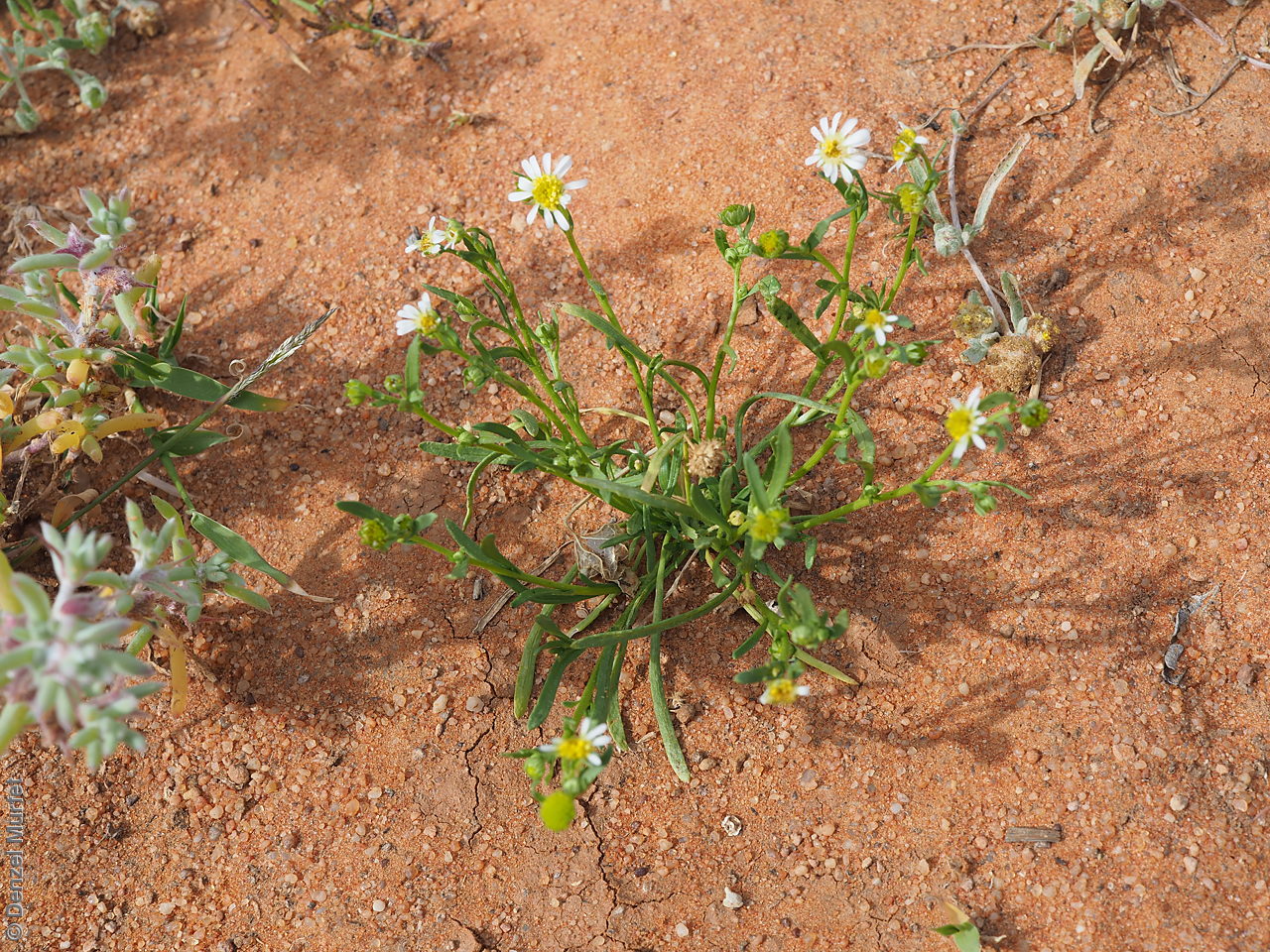
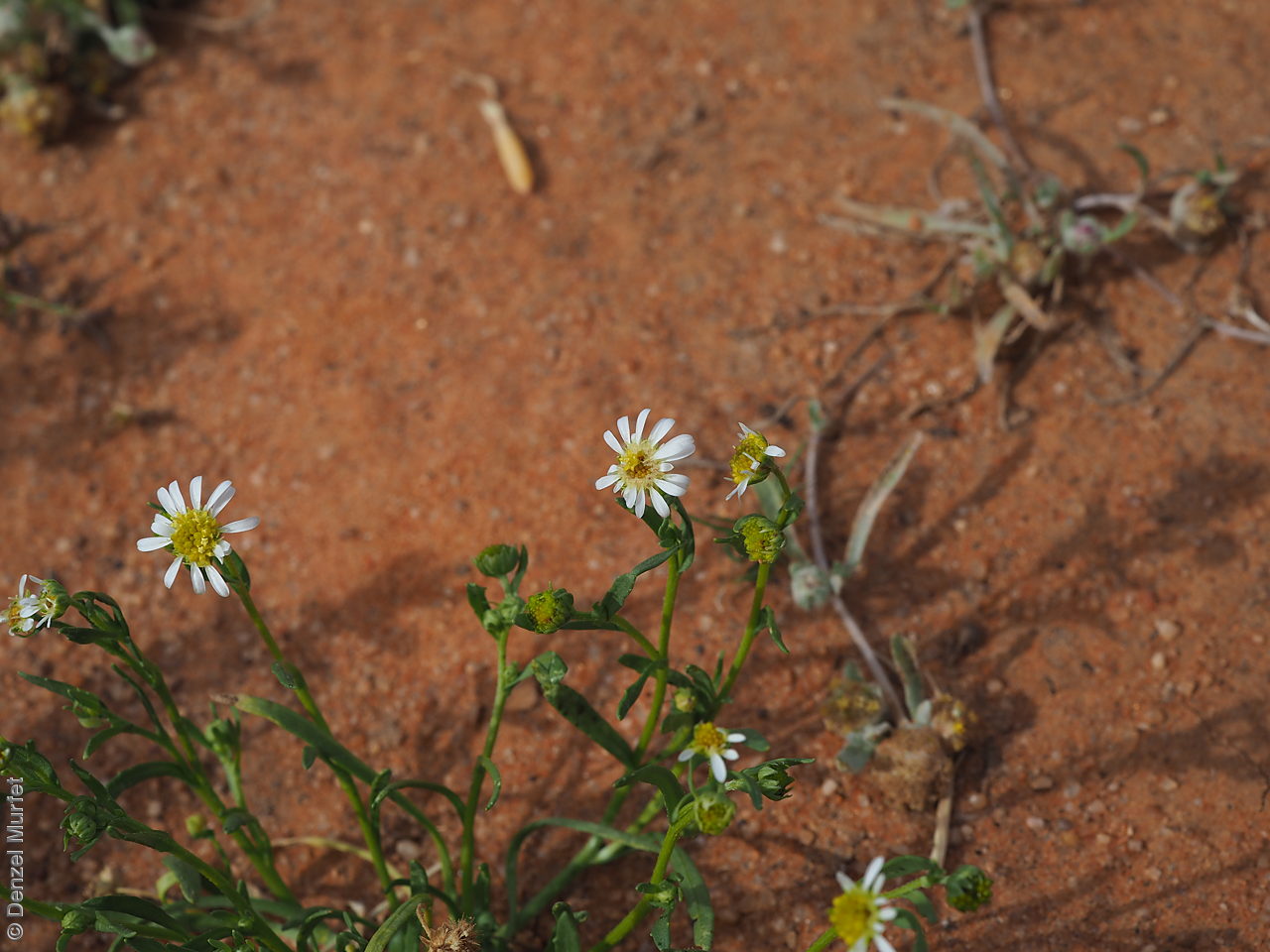
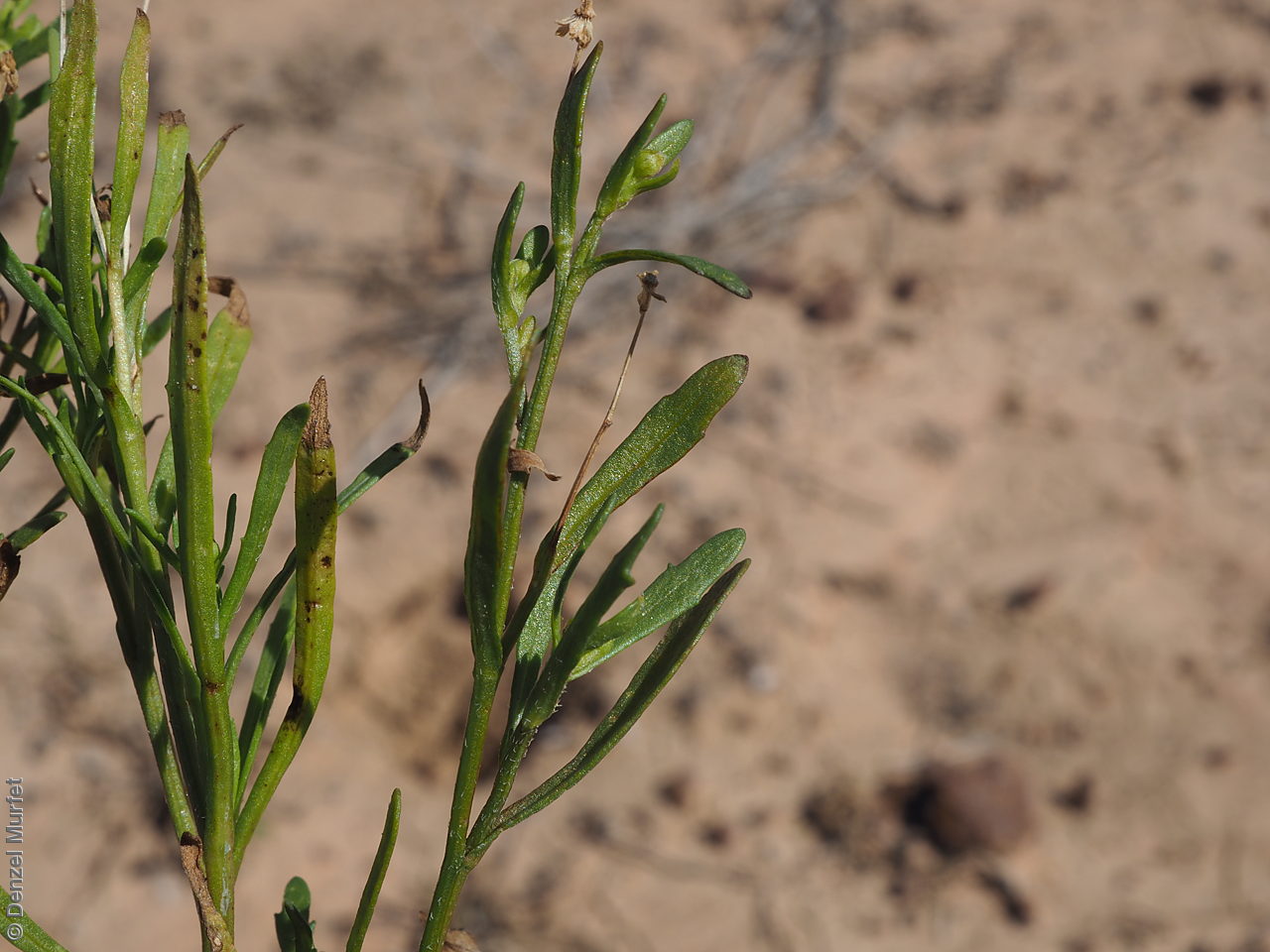
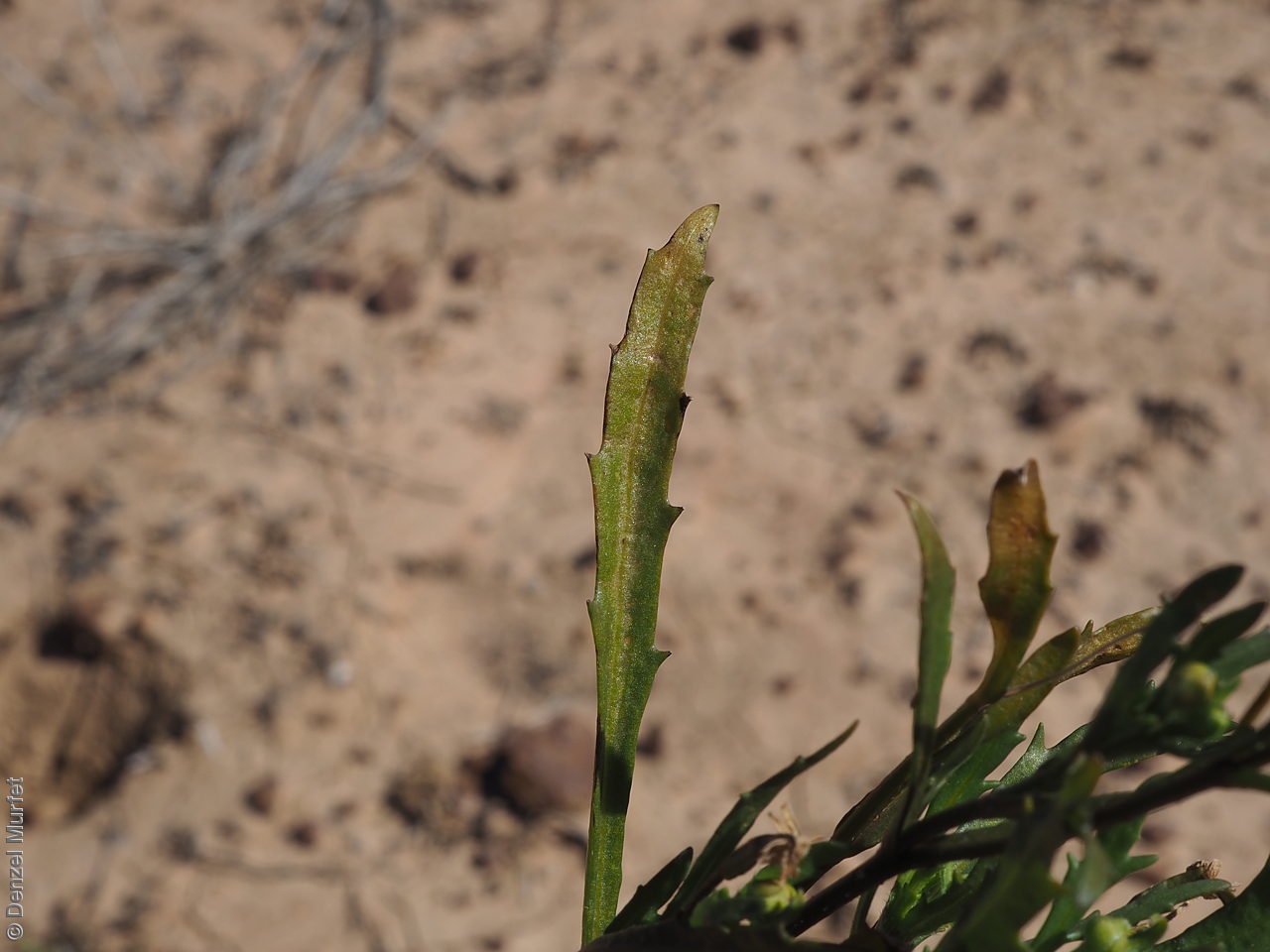
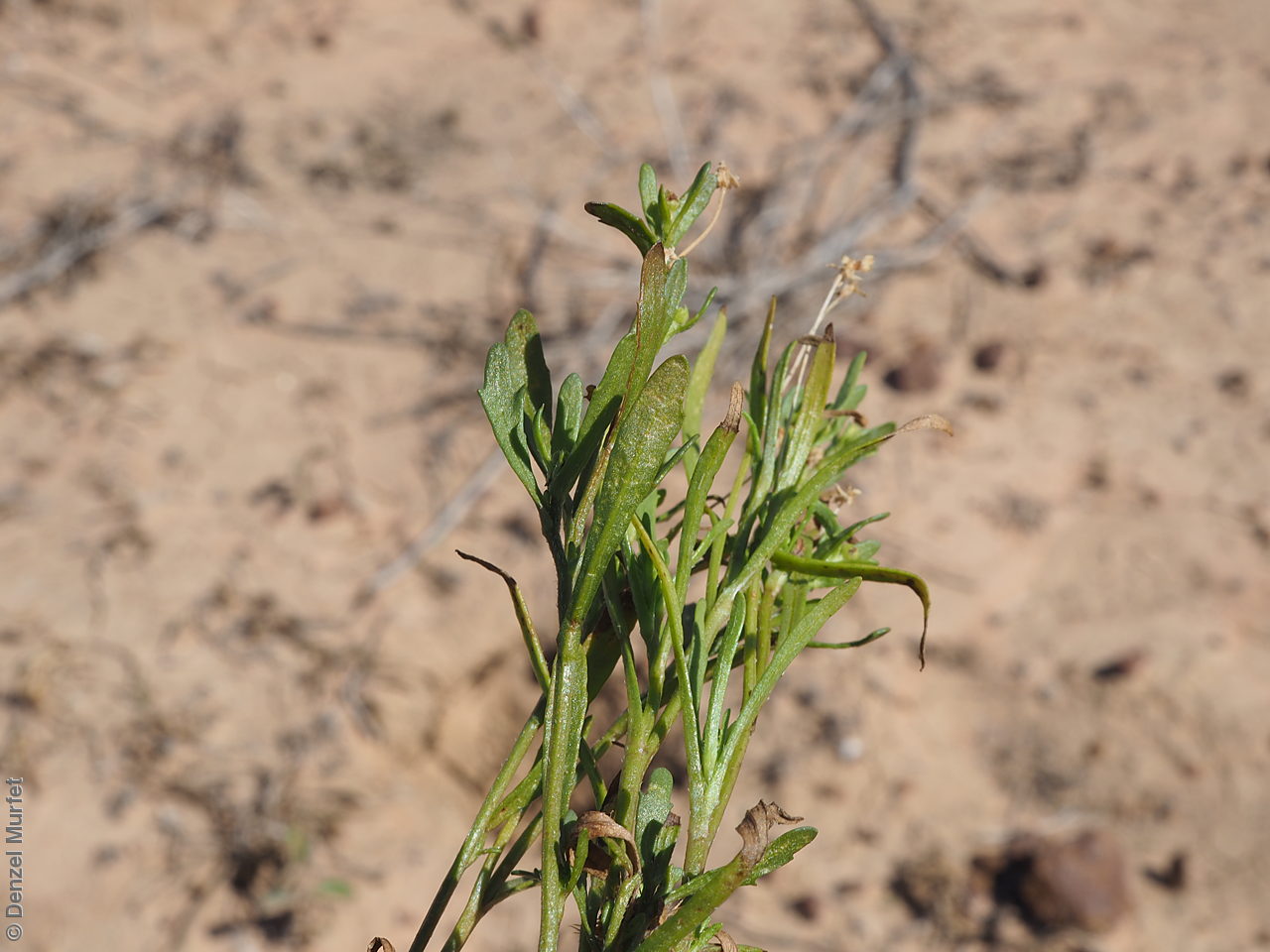
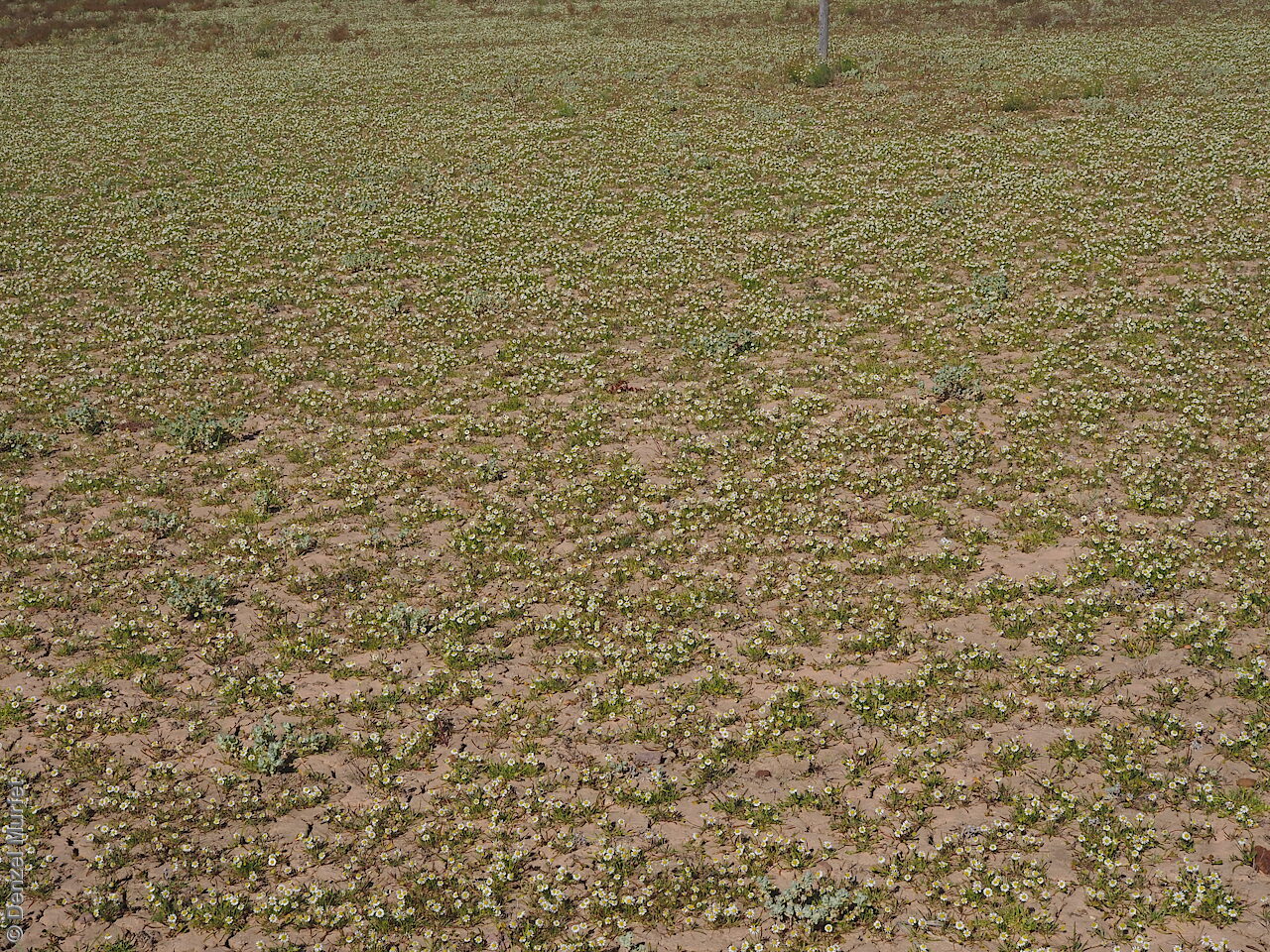
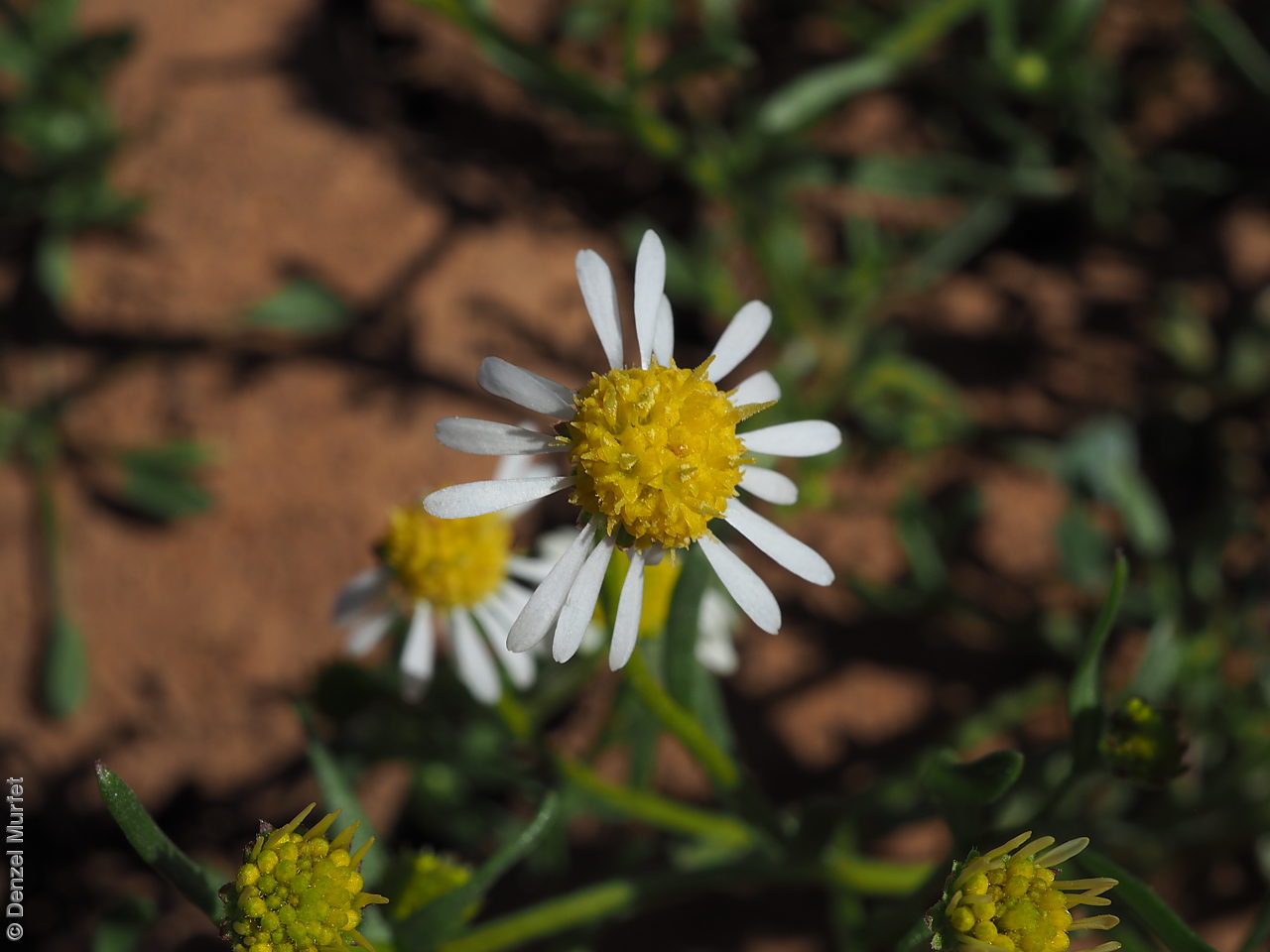
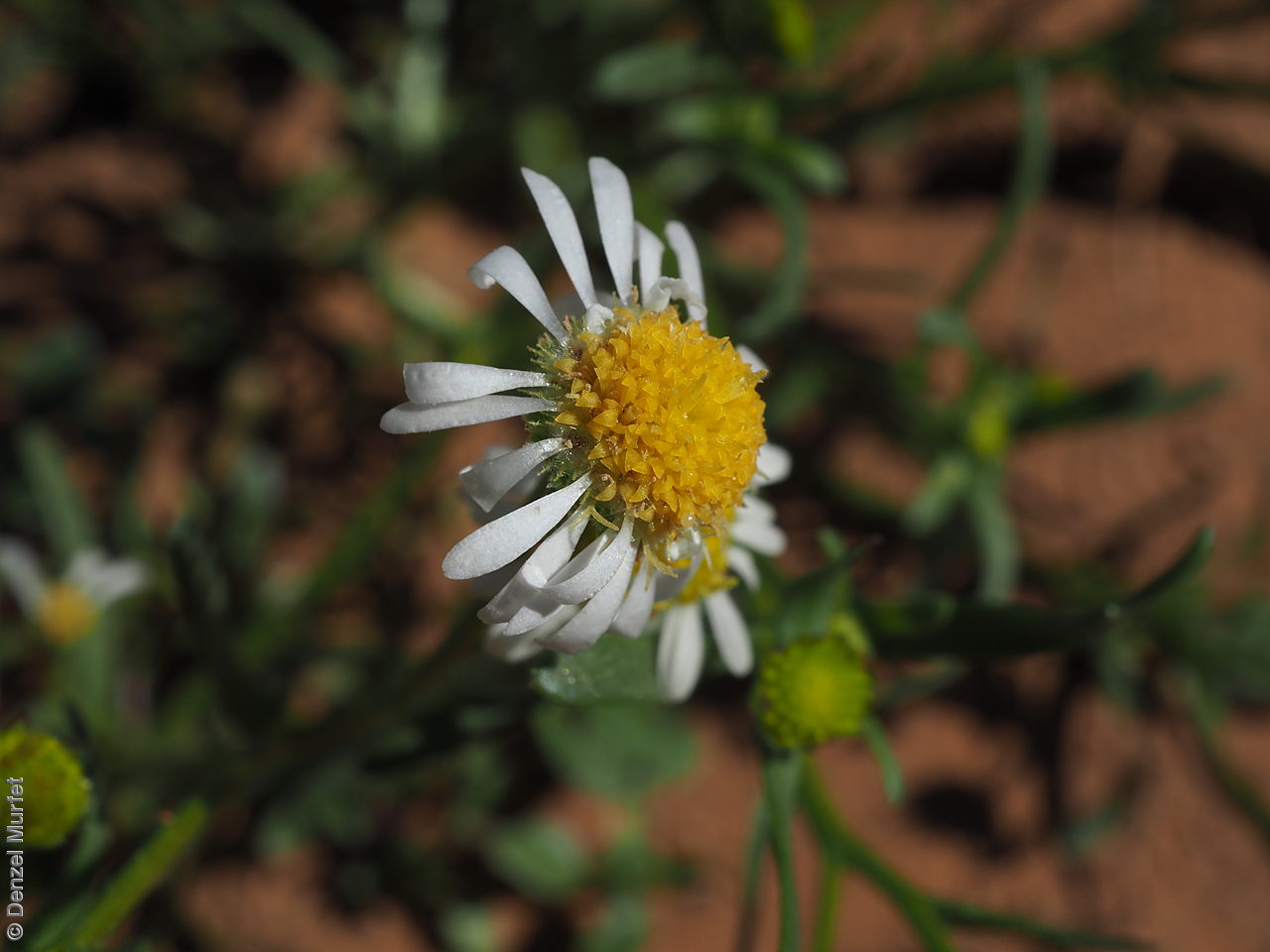
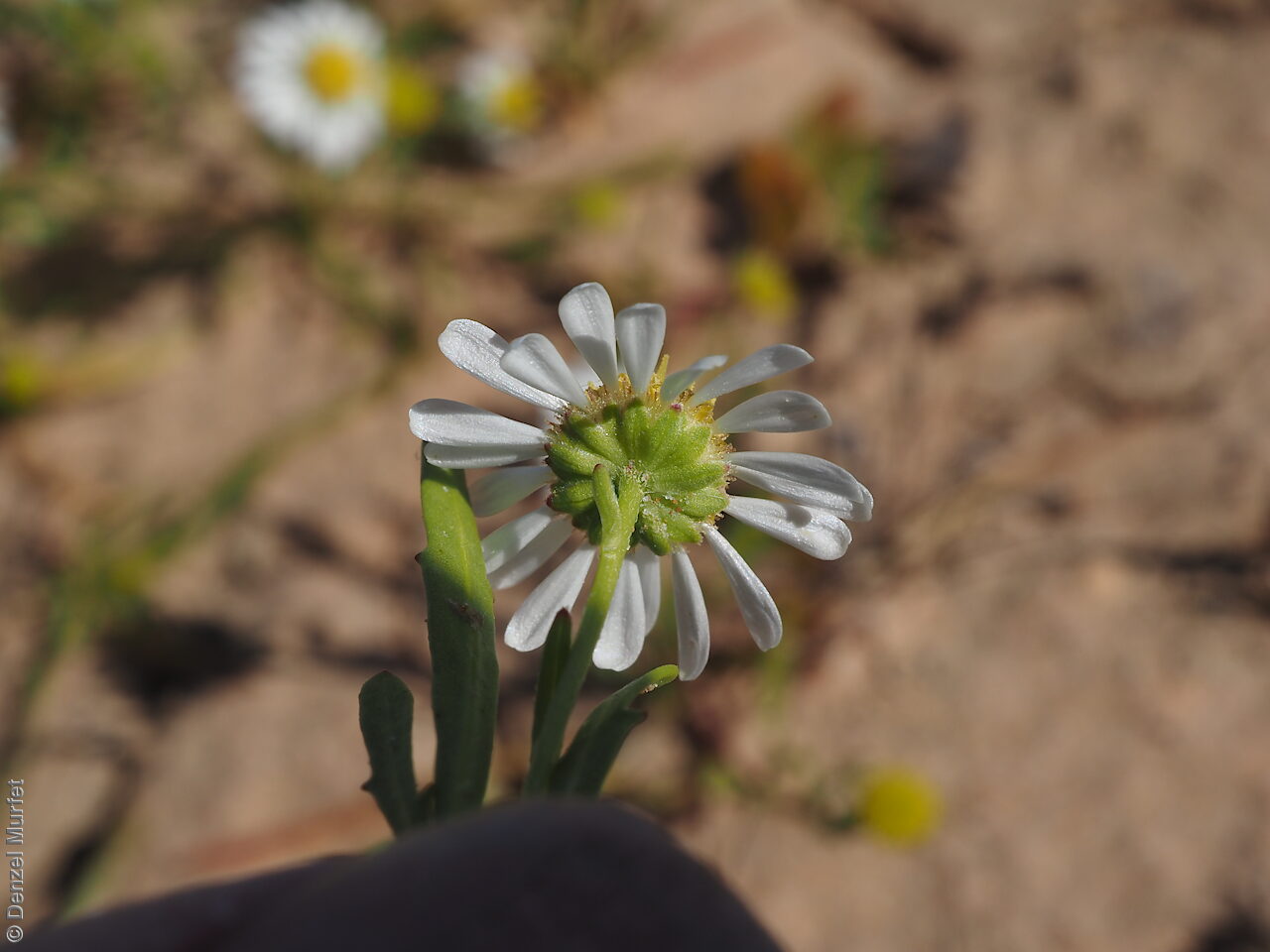
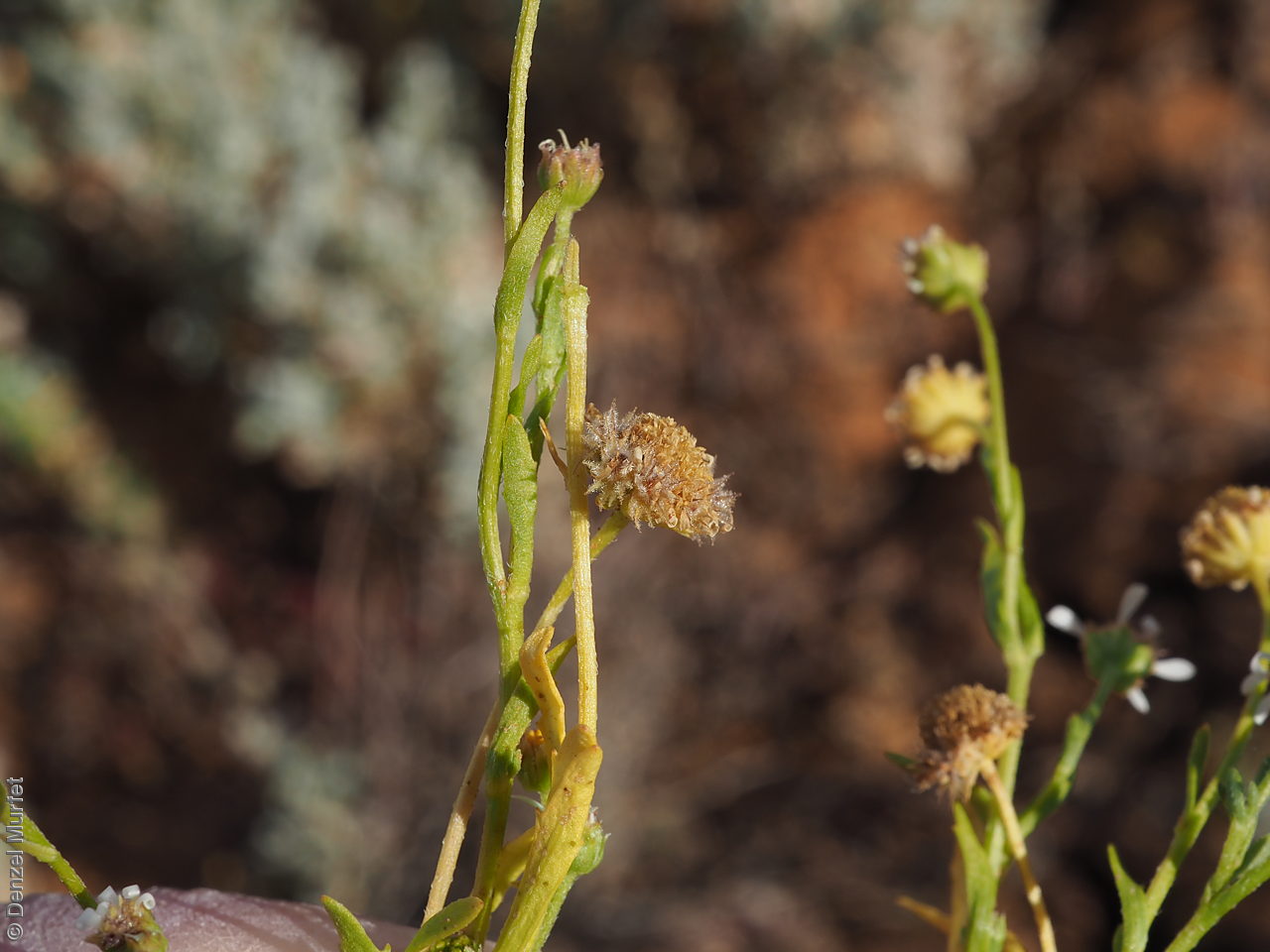
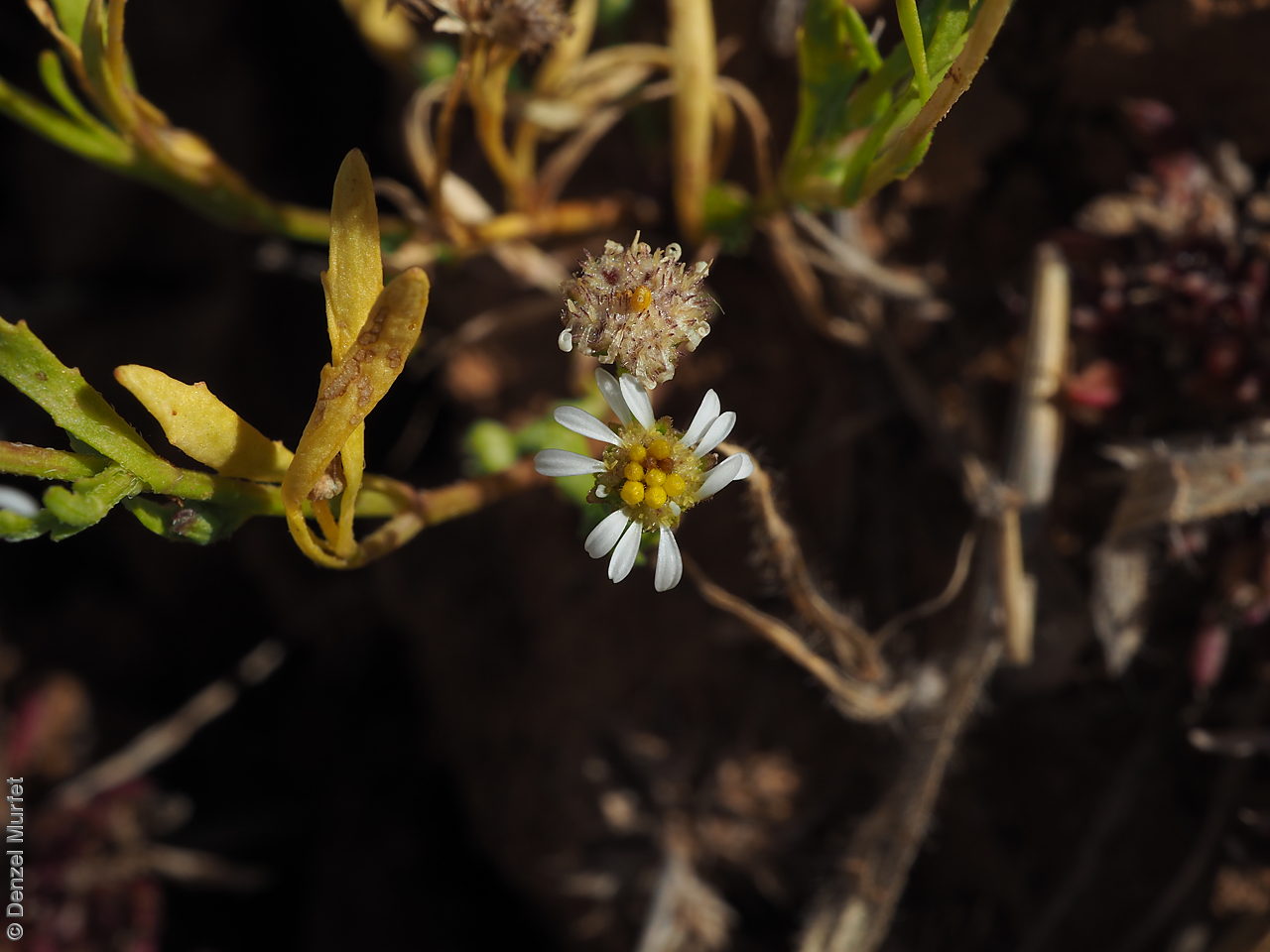
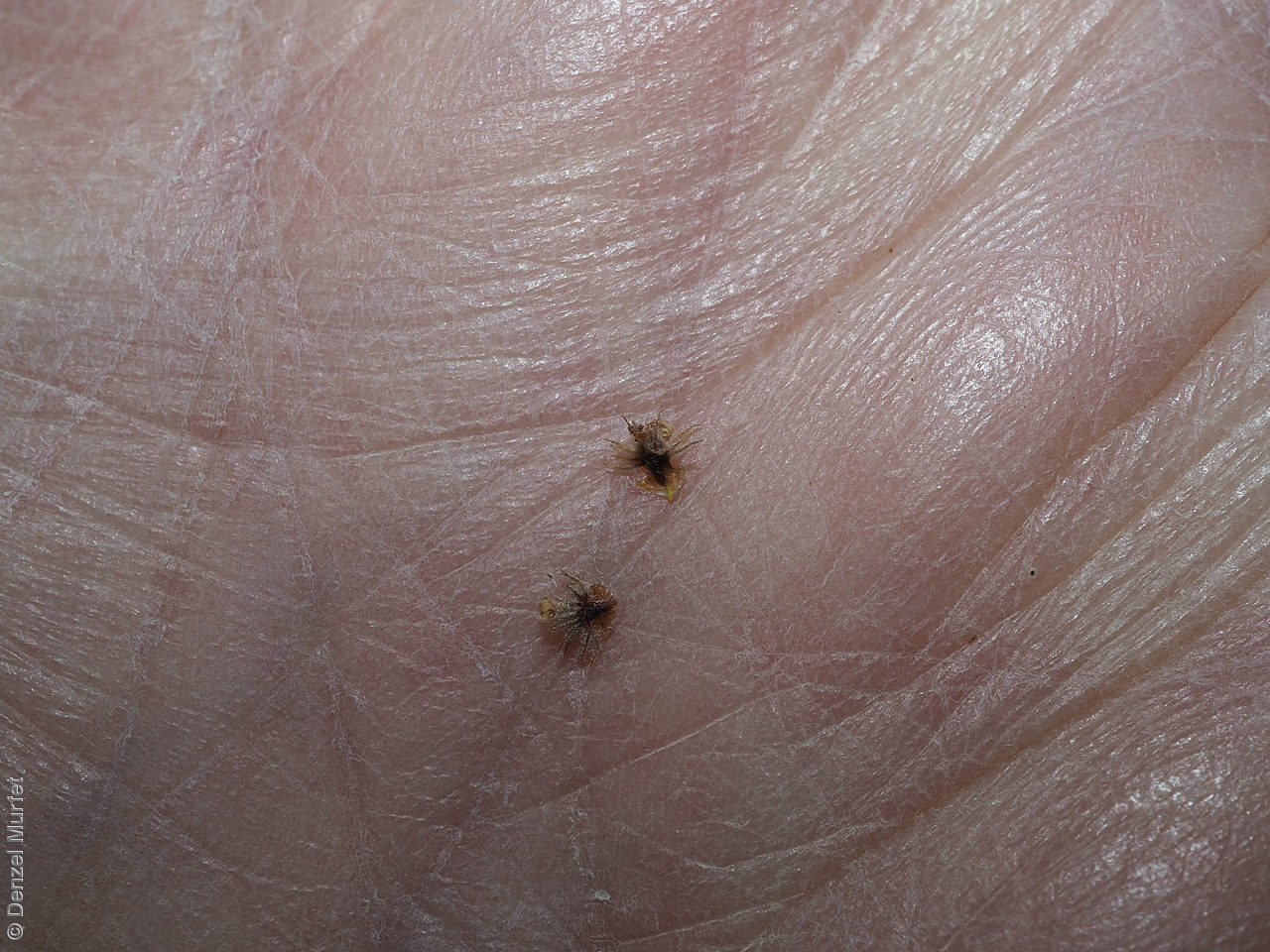
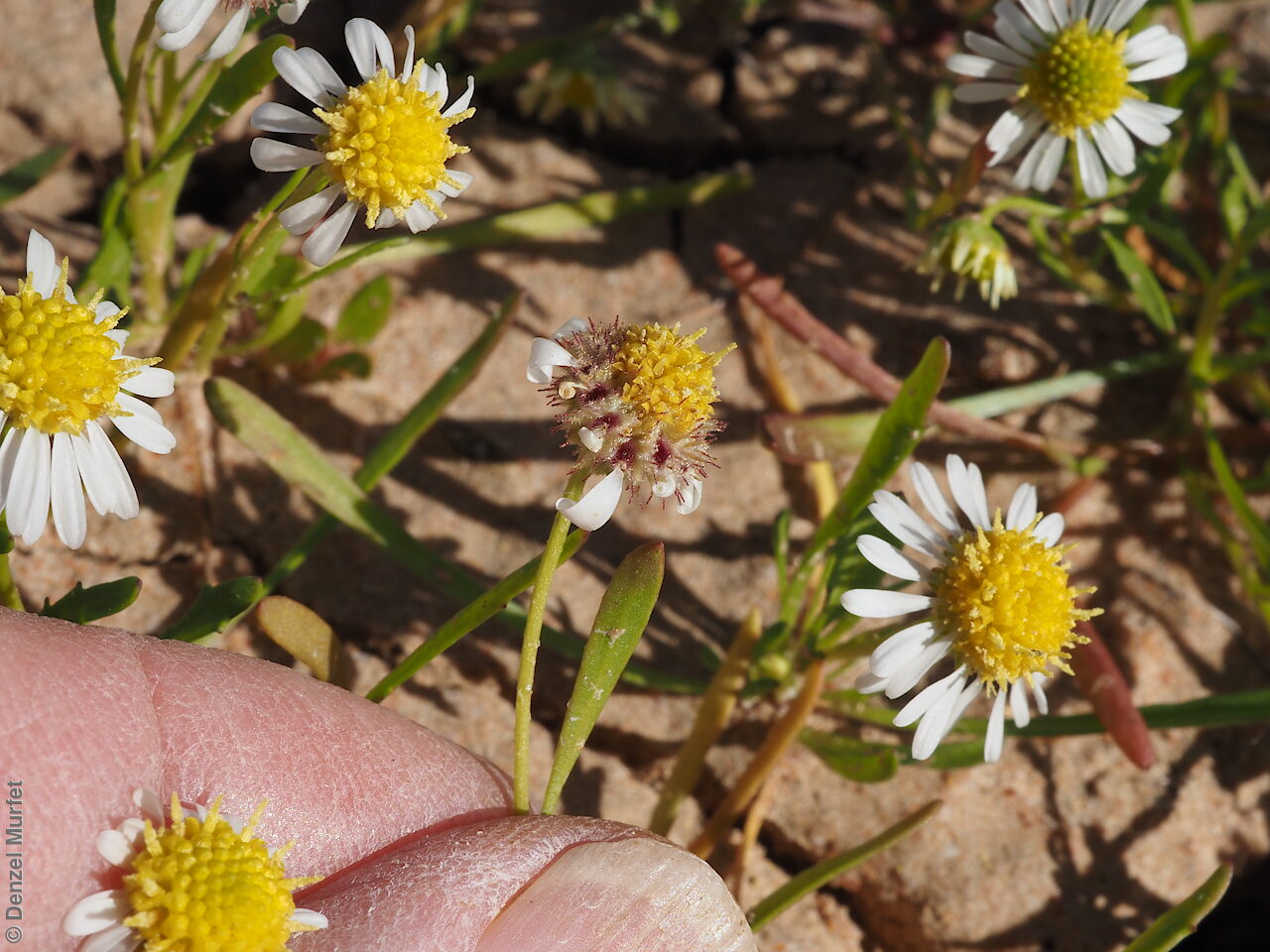
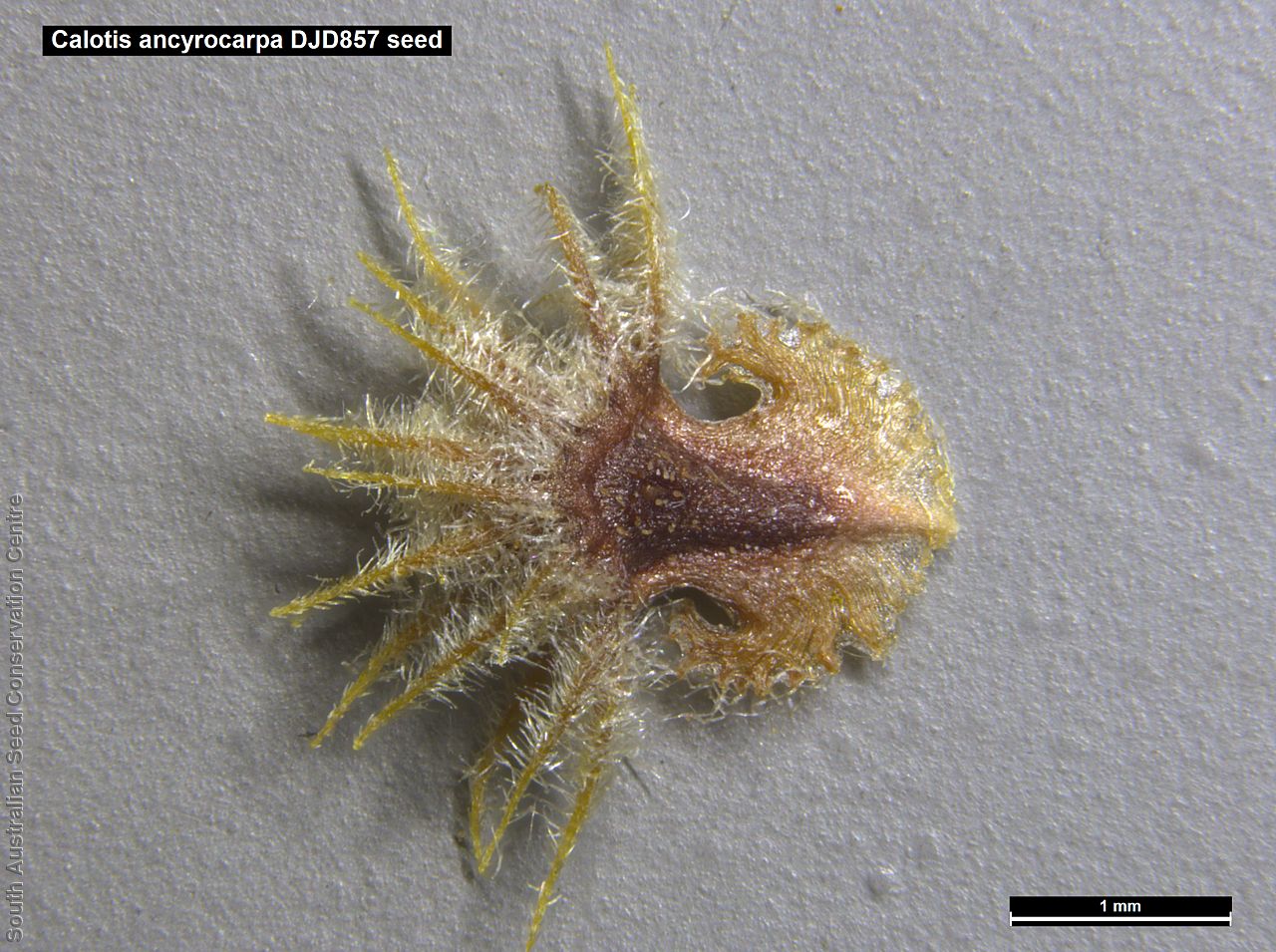
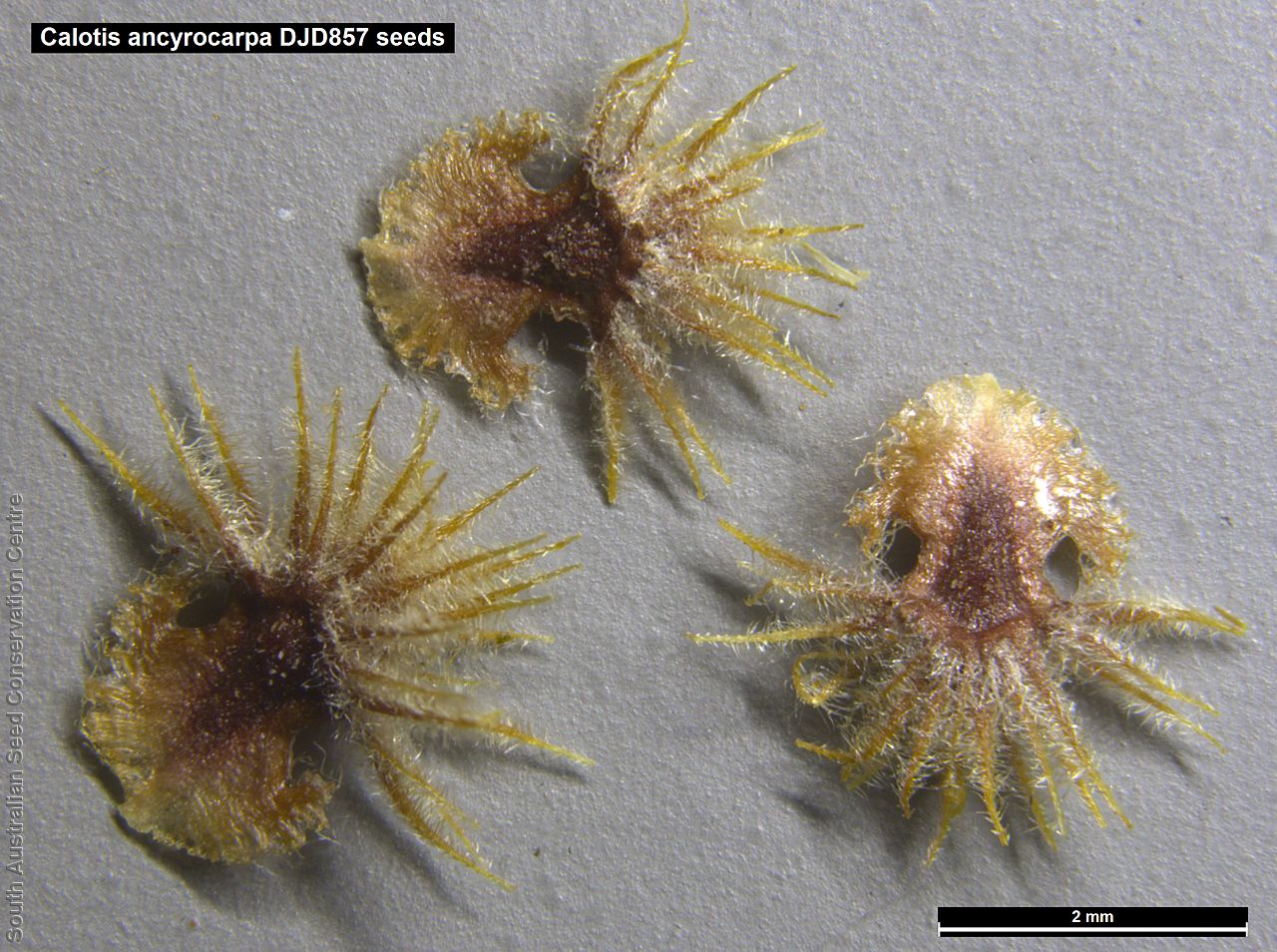


Botanical art
Etymology
Calotis from the Greek 'kalos' meaning beautiful and 'otos' meaning ear, after the first species named in the genus, Calotis cuneifolia which has an ear-shaped pappus. Ancyrocarpa meaning archor fruit.
Distribution and status
Found in the far north-east corner in South Australia growing on silty sands and loams, mainly on floodplains and stream beds. Also found in Queensland and New South Wales. Native. Uncommon in South Australia. Common in the other States.
Herbarium region: Lake Eyre
NRM region: South Australian Arid Lands
AVH map: SA distribution map (external link)
Plant description
Annual herb to 20 cm high with erect or ascending stems. Leaves sessile, broadly linear to oblanceolate to 6 cm long and 4 mm wide; entire or with a few acute linear lobes, narrowed at the base and very sparsely pubescent. Flower-heads solitary or in loose terminal cymes of 2-4 yellow daisy-heads. Flowering between June and September. Fruits are dense spiny rounded fruit-head. Seeds are red-brown anchor-shaped seed to 3 mm long, with hairs on the spine at one end and along the margin at the other end. Seed embryo type is spatulate fully developed.
Seed collection and propagation
Collect seeds between September and December. Collect mature seed heads that are dried and turning brown by picking off the heads and placing them in a paper bag. Be careful as the heads are spiny. Leave the heads in the paper bag to dry for at least a week. No further cleaning required if only the heads are collected. If other material were collected, use a sieve to separate the unwanted material. Whole heads can be stored with a desiccant such as dried silica beads or dry rice, in an air tight container in a cool and dry place. Seeds are non-dormant, viable seed should germinate readily.
| Location | No. of seeds (weight grams) | Number of plants | Date collected | Collection number Collection location | Date stored | % Viability | Storage temperature |
|---|---|---|---|---|---|---|---|
| MSB | 4,900 (4.2 g) | 50+ | 25-Sep-2007 | DJD857 Lake Eyre | 95% |
Number of plants: This is the number of plants from which the seeds were collected.
Collection location: The Herbarium of South Australia's region name.
% Viability: Percentage of filled healthy seeds determined by a cut test or x-ray.